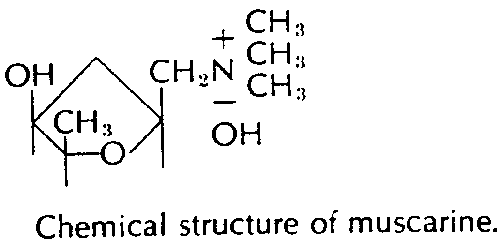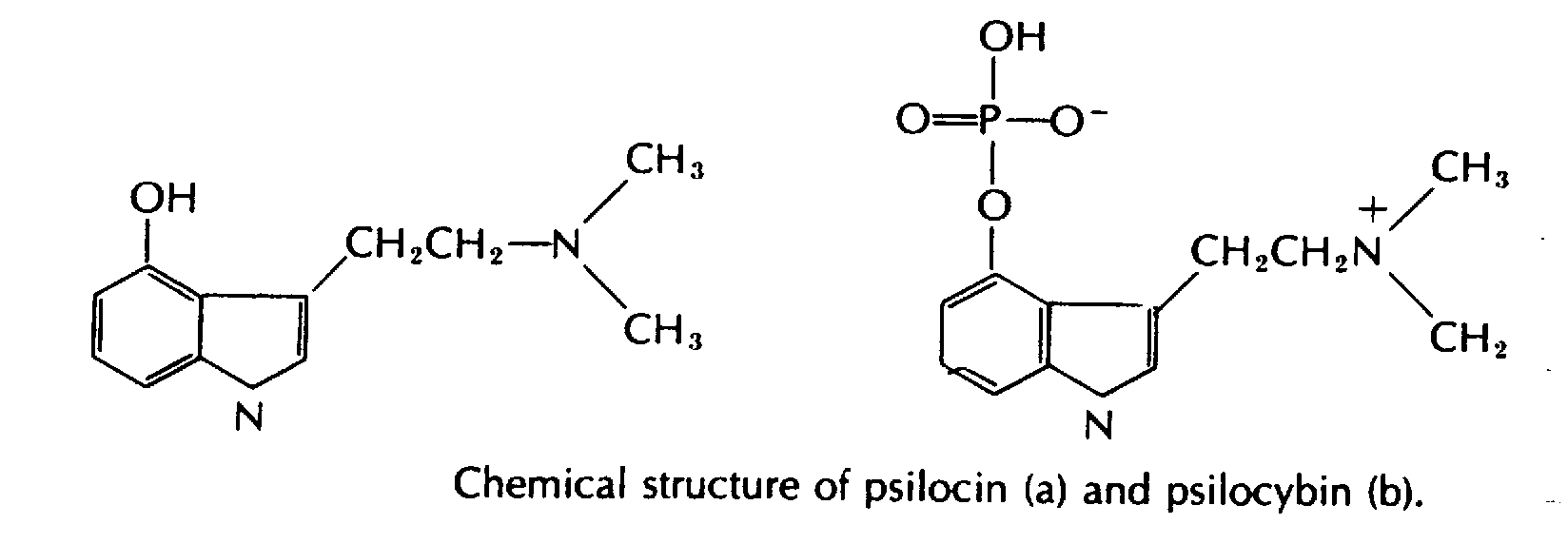
|
|
|
|
NAME OF DISEASE: Food poisoning
Food toxemia
Botulism
ETIOLOGICAL AGENTS: Staphylococcus
aureus (gram+, aerobic, coccus)
Bacillus cereus (gram+, aerobic, rod)
Clostridium perfringens (gram+, anaerobic, rod)
Clostridium botulinum (gram+, anaerobic, rod)
OVERVIEW:
Food poisoning is a toxemia associated with the ingestion of preformed microbial toxins. It is NOT an infection. Since the toxins are ingested preformed and no microbial growth within the human is required, symptomology occurs rapidly, usually within 2-12 hours. These toxins either affect the intestine (enterotoxin of C. perfringens) or the central nervous system (neurotoxin of C. botulinum) or both (S. aureus and B. cereus).
S. aureus toxin -
5 distinct antigenic types labelled A, B, C, D, E. They are water-soluble,
low
molecular weight proteins
that are heat stable (resist boiling for 30 minutes). Their mode of
action is unknown but they
each cause an enteric effect (diarrhea) and a neurologic effect
(vomiting). All are exotoxins
produced by chromosomal genes.
B. cereus toxin -
The spore germination process of B. cereus produces several exotoxins
which have either an enteric
or a neurologic effect but not both. The type of toxin produced is
dependent on the type of
food that the spore germinates in. In a high protein food (meat) the
enterotoxin is formed. In
a high carbohydrate food (rice, pasta) the neurotoxin is formed. The
enterotoxins stimulate the
adenyl cyclase - cyclic AMP system in intestinal epithelial cells and
cause fluid accumulation
in the intestine. The neurotoxins cause vomiting through an unknown
mechanism.
C. perfringens toxin
- A single heat-labile protein of 34000 molecular weight inhibits glucose
transport in intestinal
epithelial cells, damages the intestinal epithelium and causes protein
loss
into the intestinal lumen.
This activity is maximal in the ileum and minimal in the duodenum.
C. botulinum toxin
- 8 distinct antigenic types labelled A, B, C1, C2,
D, E, F, G. Types A, B,
E, F and G are coded by
chromosomal genes. C1 and D are coded by phage genes that are
lysogenic in C. botulinum.
Types A, B and E cause almost all human botulism. All toxins are
proteins of 150,000 molecular
weight that prevent release of acetylcholine at the
neuro-muscular junction
causing a flaccid paralysis.
PATHOLOGY:
There is no pathology associated with S. aureus
or B. cereus toxemia. Epithelial cell lysis is a microscopic pathologic
effect of C. perfringens toxemia; rarely, with heavily contaminated
foods, there is a diffuse, necrotizing enteritis of the jejunum, ileum
and colon. The pathology associated with C. botulinum is minimum,
inconsistent and non-diagnostic.
CLINICAL SYMPTOMS:
In cases of gastroenteritis it is important to differentiate toxemia from infectious diarrhea. The key features are the rapidity of onset of symptoms following ingestion of contaminated food or drink, the lack of fever and the absence of fecal leukocytes. All of the toxemias result in symptoms occurring within 12 hours of toxin ingestion as compared to an incubation period of 24-72 hours for infections.
S. aureus - Vomiting (often projectile) little
or no diarrhea, no fever. Symptoms occur within 1-4
hours after ingestion of contaminated food (generally
mayonnaise or dairy products).
B. cereus - Type 1: When the organism grows
in starchy foods especially fried rice, there is
emetic illness 2-3 hours after ingestion and a little
diarrhea. No fever. Type 2: When the organism
grows in meat or cream sauce or gravy there is profuse
diarrhea with a little vomiting at 10-14
hours after ingestion. No fever.
C. perfringens - Abrupt onset of profuse diarrhea
with little or no vomiting about 12 hours after
ingestion of meat. No fever.
C. botulinum - Onset of symptoms between 6
hours and 8 days after ingestion of green beans,
peppers, chili or sausage. The length of the incubation
period is a function of the amount and
antigenic type of toxin ingested. The illness is
characterized by symmetric impairment of cranial
nerves, followed in a descending pattern by weakness
or paralysis of the muscles of the
extremities and trunk. Common presenting signs are:
|
|
|
|
|
|
|
|
|
|
|
|
|
|
|
|
|
|
|
|
|
|
|
|
|
|
|
|
|
|
|
|
|
|
|
|
|
|
|
|
|
|
|
|
|
On physical examination, ophthalmoplegia and ptosis
of the eyelids are usually prominent, along with a decreased gag reflex
and facial weakness. Mental status and deep tendon reflexes are normal.
Electromyographic abnormalities are frequently present, although a normal
electromyogram does not rule out botulism. Characteristic EMG findings
include diminution of the amplitude of muscle action potentials after a
single supramaximal nerve stimulus and facilitation of the action potential
when paired stimuli are delivered at an interval of 2.5 msec. Nerve conduction
studies, blood cell counts, urinalysis, serum electrolytes, cerebrospinal
fluid and blood enzymes are normal. No fever.
DIAGNOSIS:
Since the only fatal toxemia in this group is botulism, the emphasis should be on ruling out botulism in the diagnosis. The other toxemias are not severe and symptoms generally disappear within 24 hours. In fact the physician is hardly ever consulted in the mild toxemias. Presumptive diagnosis of botulism is made by the presence of a rapidly descending paralysis. A history of ingestion of home canned food or honey is helpful. Confirmative diagnosis is made by demonstrating botulinal toxin in the patients serum or feces or in incriminated food using a mouse toxin-neutralization test. A differential diagnosis should include:
Guillain-Barré syndrome - this is an ascending
paralysis. There is paresthesias or other sensory
abnormalities and elevated cerebral spinal fluid
protein. There may be a history of an antecedent
viral infection.
Myasthenia gravis - this is a descending paralysis.
There is accentuation of muscle fatigability
during exercise and positive response to endrophomium
Other food poisonings and gastroenteritis - there is no cranial nerve involvement in these diseases
Chemical (non-microbial) food poisonings - symptoms
occur within minutes of ingestion
TREATMENT:
In toxemia due to S. aureus, B. cereus, C. perfringens the only treatment employed, and one used rarely, is replenishment of fluids and electrolytes. Patients with signs or symptoms compatible with botulism, or patients who are known to have eaten food shown by laboratory testing to contain botulinal toxin, should be admitted to an intensive care unit to permit monitoring of respiratory and cardiac function. Airway patency should be guaranteed by insertion of an endotracheal tube or tracheostomy before bulbar or respiratory impairment becomes severe. Induction of vomiting or gastric lavage is recommended if exposure has occurred within several hours. Unless there is paralytic ileus, purgation is advisable, even after several days, to facilitate possible elimination of unabsorbed toxin from the gastrointestinal tract; alternately, high enemas may be used.
Injectable therapeutics sometimes used include:
1. Trivalent (ABE) equine-origin botulinal antitoxin to neutralize unabsorbed toxin.
2. Guanidine hydrochloride to increase release of acetylcholine from nerve terminals.
3.
4-aminopyridine to increase release of acetylcholine.
INFANT BOTULISM - A SPECIAL CASE
Several years ago it was recognized the C. botulinum
could colonize the gastrointestinal tract of the infant. C. botulinum
spores in honey used to sweeten infants milk or water, when ingested, geminate
in the infants intestinal tract, colonize it and produce toxin in vivo.
Constipation is the first sign of disease; this is followed by the same
neurological signs seen in the adult. Antibiotics are generally not effective
and may exacerbate the illness by elimination of normal flora. Therapy
is the same as for adult botulism except that antitoxin is generally not
used because the disease is milder in children.
MUSHROOM POISONING
The ingestion of fleshy fungi (mushrooms) can be a gourmet's delight or a harbinger of various side effects ranging from mild gastrointestinal distress to hallucination to delirium to coma to death. There is no simple way to separate the majority of mushrooms into those that are delectable and those that are poisonous. Mushroom poisonings are classified according to the organ system exhibiting major involvement.
Mycetismus gastrointestinalis
When the gastrointestinal tract shows major involvement, there may be mild discomfort or violent retching and diarrhea accompanied by cramps. The water loss may be great and cause subsequent electrolyte imbalance. Sometimes there may be cerebral manifestations, with dizziness and slight hallucination. Treatment is not usually necessary although gastric lavage may be helpful.
Mycetismus choleriformis
When the ingested mushrooms affect the activity or concentration of acetylcholine there is a severe and frequently fatal illness. The major feature of this form of disease is a long symptomless period (6-24 hours) following ingestion. The symptoms begin suddenly and are characterized by violent vomiting, continuous diarrhea, dehydration and muscle cramps. Fluid loss amounts to 2-3 liters per day. There is a feeble rapid pulse. No sensory loss is noted at this stage but the patient may be listless and apathetic. The poisoning is distinctly diphasic. Symptomatic treatment results in remission; however, there is often a fatal relapse. The terminal symptoms include a sudden onset of confusion, comma, sweating, miosis, muscular twitching, lacrimation and salivation. This is due to the action of the toxins amanitine and muscarine on smooth muscles and exocrine glands innervated by the cholinergic nerves. Treatment is large doses of atropine.
Mycetismus nervosus
When mushroom poisoning affects the parasympathetic nervous system and the gastrointestinal tract within two hours of ingestion, the symptoms are due to muscarine only.

There is violent gastrointestinal involvement, profuse sweating, convulsions, contracted pupils and salivation. Depending on the dose of the toxin, the patient develops delirium, hallucination or coma. Death may result if sufficient toxin is present and is due to cardiac and respiratory failure. Atropine administration is the preferred treatment.
Mycetismus sanguinareus
When the ingested toxin destroys the red blood cells, the result is hemoglobinuria and transient jaundice six to eight hours after ingestion of raw or under cooked false morel mushrooms (Helvella esculata) The toxin that causes this is monomethyl hydrazine. Treatment is not usually necessary.
Mycetismus cerebralis
When the ingested toxin causes hallucinations, it is generally due to the hallucinogen, psilocybin.

This is found in several species of mushroom of the genus Psilocybe.
|
|
|
|